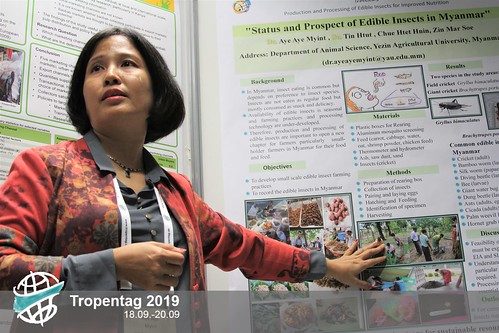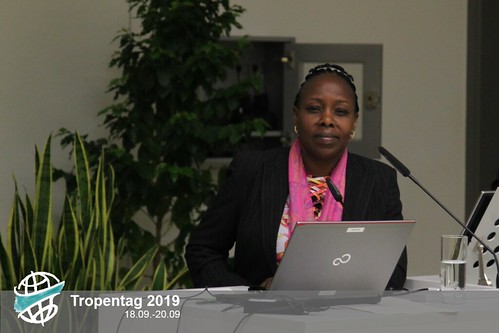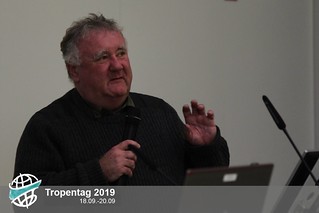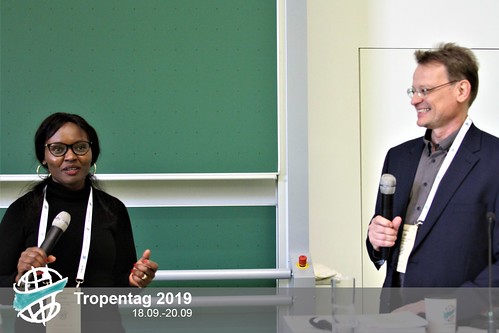Ahmed's blog
Anything birds eat, human can eats!
Sun, 09/22/2019 - 13:25 — Ahmed
Did you know that insects and caterpillars are also food for human? My grandmother once told me “anything birds eat, human can eats! “According to Christian Ratompoarison and others findings, there are about 65 edible insects identified in Madagascar. Strange?

Insects and caterpillars were considered as food for poor households or communities during the famines. Surprisingly, the trend is now changing worldwide. In Tropentag 2019, number of researchers presented their research findings about edible insects and caterpillars in Africa and Asia. Edible insects and caterpillars form sustainable ecosystem between environments and nutrition. Case studies from Madagascar, Myanmar, Kenya and Uganda were presented during the poster sessions in Tropentag 2019.
Policy briefs would simplify science: are policymakers and scientists ready?...
Sat, 09/21/2019 - 15:41 — Ahmed

Immaculate N. Maina- County Minister of Agriculture, Livestock and Fisheries, Nakuru County, Kenya was among the keynote speaker who gave a great speech on Scientific knowledge transfer and the Science-Policy Interface: Bridging the Gaps and Overcoming the Traps ” Scientists need opportunities to engage with policy makers. For instance, the Tropentag conference could be one of the platforms. Having open dialogues can enhance the knowledge hence understanding in the policymaking process. The academic research findings are to be consumables to the community not just end in conferences and publications.” - Immaculate N. Maina
Biological and economical battle of legumes and cereals..
Fri, 09/20/2019 - 16:23 — Ahmed
Surprisingly, legumes are imported from Canada to Algeria! The similar trend had been observed in Morocco. Algeria's and Morocco’s main crops are cereals, mainly wheat and barley. Why not crop rotation? It's possible past crop failure due to diseases and pests and labour demand could be the traps for this trend in Algeria and Morocco. However, more evidence is needed.
Fearing Climate change? Farmers are the future…..
Fri, 09/20/2019 - 11:59 — Ahmed CLIENT II is an International Partnerships for Sustainable Innovation" project funded by Federal Ministry of Education and Research (BMBF) and aims to promote international partnerships in the fields of climate, environment and energy. German experts and partners in Africa and Asia come and work together to achieve the project goals.
CLIENT II is an International Partnerships for Sustainable Innovation" project funded by Federal Ministry of Education and Research (BMBF) and aims to promote international partnerships in the fields of climate, environment and energy. German experts and partners in Africa and Asia come and work together to achieve the project goals.
The flavour of good intention
Thu, 09/19/2019 - 13:19 — AhmedWhy chocolate? In 2018, chocolate consumption worth about 828 billion USD in USA. Per capita consumption was about 5.5kg and 8.5kg in USA and Germany, respectively. The main driver for such higher chocolate consumption in Europe comapred to the USA is the flavour. A keynote speaker, Carla Martin, Founder and Executive Director of The Fine Cacao and Chocolate Institute said it is not just chocolate, “it is a flavour that has value”. “The best flavour shows status, enjoyment and so on but, farmers get less credit on it.” The best flavour of the food can be used as a factor to express originality and status. However, the question is are farmers getting the right profit value of their cacao?
 Youtube video: Carla shares her love & enthusiasm for cacao
Youtube video: Carla shares her love & enthusiasm for cacao
Is nutrition sensitive value chain a solution for sustainable food system?
Wed, 09/18/2019 - 15:31 — Ahmed
By adopting the NSVC framework, a project is able to improve diets of vulnerable rural and urban consumers through increased consumption of more diverse, safe and nutrient-dense foods, which are sourced directly from smallholder farmers. Therefore, NSVCs touch everyone in the chain from farmers, wholesalers, processors, consumers and state actors (policies, standards and safety authorities, NGOs etc.).




